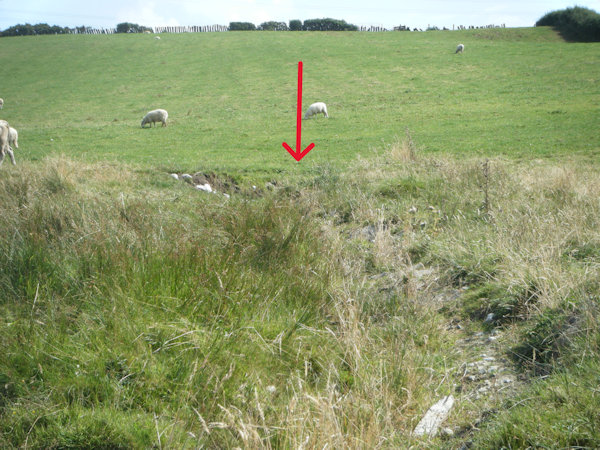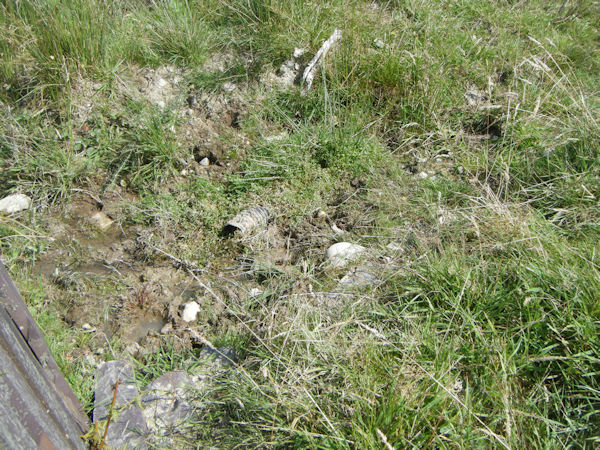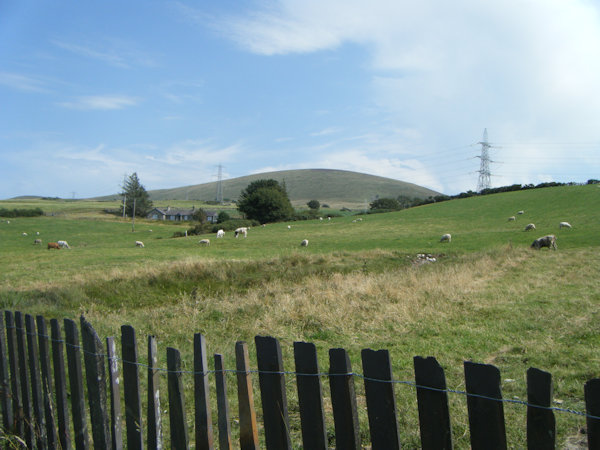 |
Dedication: Saint Llechid Location: Plas Ucha Coordinates: 53.21242N, -4.05933W Grid reference: SH625703 Heritage designation: none |
HOME - WALES - CAERNARFONSHIRE
 |
Dedication: Saint Llechid Location: Plas Ucha Coordinates: 53.21242N, -4.05933W Grid reference: SH625703 Heritage designation: none |
St Llechid, reputedly the only daughter of the Brittonic prince Ithel Hael, is among a group of saints who are said to have travelled to Wales with St Cadfan at some point during the 6th century. Although relatively little is known regarding her life, the fact that her medieval cult clearly never spread beyond the bounds of Llanllechid parish suggests that she was more of a hermit than a missionary. Nonetheless, Llechid's cult was evidently very strong here, with the parish boasting both her shrine, which was most probably housed in the parish church, and Ffynnon Llechid, which was originally accompanied by a medieval well-chapel, known as Capel Llechid; both were certainly destinations for medieval pilgrimage.
Despite the fact that there is no record of how exactly medieval pilgrims would have used Ffynnon Llechid, a number of traditions regarding the site that survived into the late 19th century, and which were recorded by Hugh Derfel Hughes in his Hynafiaethau Llandegai a Llenllechid in 1866, indicate that the spring once possessed great local importance. According to Hughes, the "hen bobl Llenllechid" ("old people of Llanllechid") used to "galw am lymaid o ddwfr" ("call for a sip of water") from Ffynnon Llechid when they believed that they were "ar fin marw" ("about to die"), perhaps in the hope that it would prolong their lives, or potentially provide absolution from sin. Hughes also attested that Ffynnon Llechid had formerly been attributed "rhinweddau iachaol" ("healing properties"), and although he did not elaborate on this statement, Francis Jones, writing in The Holy Wells of Wales in 1954, claimed that the spring was once "visited by sufferers from skin diseases", and Sabine Baring Gould and John Fisher's Lives of the British Saints (1911) mentions "scrofula" in connection with the site.
Hughes also detailed a legend, associated specifically with Capel Llechid, which asserted that Llanllechid's parish church was originally going to be erected next to the holy well. However, because all of the stones that were brought to the building site by day were miraculously "cludo y nos i'r lle y saif Eglwys Llanllechid arno yn awr" ("transported at night to the place on which Llanllechid Church now stands"), it was decided that only a small chapel should be built by the spring, and the parish church itself was constructed at its present site. This type of legend seems to have been rather common in medieval Britain, a very similar version of the story having once been associated with Our Lady's Well at Walsingham, in Norfolk, and it is very likely that at least some of the tale is rooted in fact. In all probability, the original church was first constructed next to the spring, but had to be moved to a different location because the presence of the well meant that the ground was unstable, and thus unsuitable for anything more than a well-chapel. If this was the case, then Ffynnon Llechid was clearly the original centrepoint of St Llechid's medieval cult, before her shrine was created.
Presumably, then, Capel Llechid would have been built at roughly the same time as the medieval parish church, and would undoubtedly have been visited by pilgrims on their way to or from St Llechid's shrine. Unfortunately, however, little else is known about the chapel, and the few books of the early 20th century that mention its existence seem to confuse it with one of the other medieval chapels that existed in the parish, Yr Hên Eglwys, which was, according to Hughes, located "yn ymyl Bryn yr Hen Eglwys wrth Ffynon [sic] Bach" ("near Bryn yr Hen Eglwys by Little Well"). Hughes included a comprehensive list of Llanllechid's medieval chapels in his Hynafiaethau, and recorded the dimensions of Yr Hên Eglwys as "16 llath o hyd wrth 8 o led" ("16 yards long by 8 wide"); he also reported that this chapel's foundations had recently been taken away by a "Mr. D. Owen", and recounted the story of a woman, then 90 years old, who remembered going to its ruins as a child to "chware gweddio" ("play praying").
The first instance of confusion between Yr Hên Eglwys and Capel Llechid that I have come across appears in Lives of the British Saints, written by Sabine Baring-Gould and John Fisher in 1911, in which it was claimed that Capel Llechid was "called also Yr Hên Eglwys", and that it had been "fairly complete" in 1780; it is not clear whether the latter assertation is trustworthy, given the fact that the first is not. The two chapels were further confounded several years later in H. Harold Hughes and Herbert L. North's Old Churches of Snowdonia (1924), which, most probably drawing upon Hugh Derfel Hughes' Hynafiaethau, reported that the Capel Llechid was "16ft. long by 8ft. broad", and had "a north door". Whilst these dimensions may just be coincidentally similar to those of Yr Hên Eglwys, it cannot be ignored that they correspond directly with the numbers given for that chapel by Derfel Hughes, and "Yr Hên Eglwys" was listed as an alternative name for Capel Llechid in Old Churches of Snowdonia. It is worth noting, nevertheless, that 16 yards long and 8 yards wide may have been something of a standard measurement for medieval chapels, at least in the parish of Llanllechid, as Derfel Hughes also listed another chapel, namely "Eglwys Nant Ffrancon", with exactly the same dimensions, so Old Churches of Snowdonia may not be completely inaccurate.
Regardless of the chapel's true measurements, Capel Llechid evidently fell into ruin after the Reformation (although it does not appear to have been utterly destroyed, unlike other Welsh well-chapels, most notably Ffynnon Feugan in Pembrokeshire). Some of its foundations clearly existed in 1866, however, as Derfel Hughes remarked in Hynafiaethau that the chapel's "gweddillion" ("remains") were "yno eto" ("there still"), and, according to Old Churches of Snowdonia, only "the foundations of one wall" were left to be seen by 1924, the rest having been "taken away to repair walls" in the locality. These scant remains must have been removed within the last century, because absolutely no trace can be seen at the site today.
As with the two chapels, the exact location of Ffynnon Llechid has also become confused with a number of other springs in the area, and this is unsurprising, given the fact that it has never been named on Ordnance Survey maps, and the Royal Commission did not inspect the site during the early 20th century. Nonetheless, its site can be traced fairly easily using information given by Derfel Hughes and other sources during the late 19th and early 20th centuries. According to Derfel Hughes, Capel Llechid was situated "yn agos i" ("close to") Ffynnon Llechid, "ar dir Plas uchaf" ("on the land of Plas uchaf"), where, he claimed, there were "dau gae" ("two fields") called "Cae'r Capel" and "Cae'r Betws", meaning, respectively, "Field of the Chapel" and "Field of the Oratory". The existence of these two fields is proven by an article entitled Llanllechid, published in Yr Haul in August 1887, which placed "Capel Llechid, Cae'r Bettws, a Ffynnon Llechid" a "milltir o'r Llan" ("mile from the church"). Additionally, a very detailed description of Ffynnon Llechid's location was included in Old Churches of Snowdonia:
|
Taking the old road to Aber, which deviates from the main road close to Llanllechid at Cae Llwyn Grydd, we come, after walking about three quarters of a mile, to the site of an old chapel called Yr Hen Eglwys, or Capel Llechid. It is situated a few yards to the right of the road, just before we reach a little stream that flows past a farm on our right, called Cae Ffynnon. There is now nothing to be seen but the foundations of one wall, by the east side of an old spring, which is known as Ffynnon Llechid. |
In August 2025, I carefully followed the directions published in Old Churches of Snowdonia. After locating Cae'r Ffynnon, a house located at SH6275870356, I was able to identify the "little stream" that issues past it, which is marked, in part, on both modern and historic Ordnance Survey maps. The description above makes it clear that Ffynnon Llechid is situated just south-west of this stream, a few yards south-east of the road, and it was at this approximate location that I noticed a dry gully, leading to the road from a point somewhere in the field to the right (as Old Churches of Snowdonia describes); the main image above is of this gully. On closer inspection, it became evident that the gully began a few yards from the road, at SH6257870353, and that the water, undoubtedly produced by a spring, that had originally issued down it was now being piped beneath the ground into a ditch beside the fence; I could see this water trickling from a black plastic pipe that was embedded in the ground beside the road, at the end of the gully. Intriguingly, there was a relatively large flat patch of ground located just north-east of the spring, which looked suspiciously like the site of a chapel; there were a number of large white stones in the northern side of the gully, next to this flat area, which could be remnants of the chapel. If so, then this would fit with the idea that the east side of the spring adjoined Capel Llechid.
Although I have not been able to find a definitive record of the locations of the two fields mentioned by Derfel Hughes, "Cae'r Capel" and "Cae'r Betws", as they are not included on the 1840s tithe schedule of the parish, Derfel Hughes recorded that they were both situated on "Plas Uchaf", along with the well and chapel, and an area named "Plas Ucha", which itself contained several fields, is named on the tithe schedule. On the schedule, none of these fields are depicted, but two of them must have been "Cae'r Capel" and "Cae'r Betws", as there is nowhere else in the parish with the title "Plas Uchaf", or anything resembling it. It is surely no coincidence, then, that "Plas Ucha" adjoins, according to the tithe map, "Cae'r Ffynnon", and that the dry gully and spring that I saw are located within "Plas Ucha" itself. There is only one other spring situated within the bounds of "Plas Ucha", and it is located too far from Cae'r Ffynnon, and too close to the parish church, to have ever been the holy well. There can, therefore, be no doubt that the spring located at SH6257870353, which is depicted in the photographs on this page, is Ffynnon Llechid.
 |
 |
|
Access: The spring is located on private land, but the gully and flat area can be seen easily from the road. |
Copyright 2025 britishholywells.co.uk